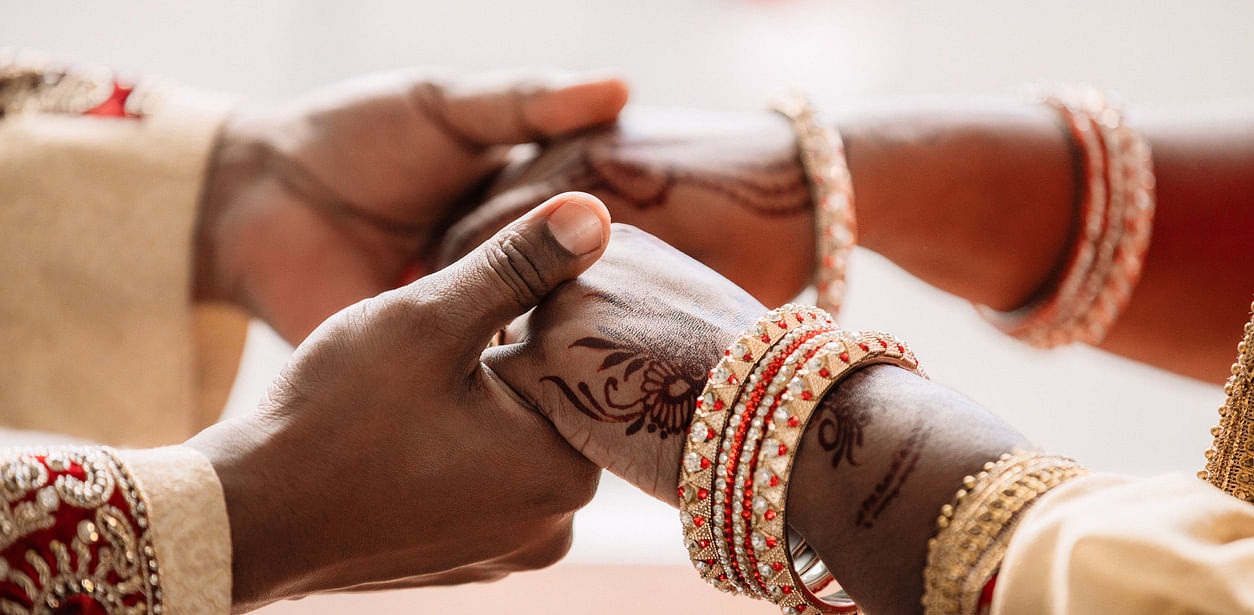
‘If a girl has voting rights at 18 years, then why can’t she get married at 18 years? A girl from Jharkhand, who was one among the 2,500 ’Young Voices’ from 15 states, asked. The issue on increasing the legal age of marriage for girls has unleashed a spate of arguments, for and against.
Now, those who are batting for tinkering with the minimum age for girl’s marriage, posited their argument on the premise that early marriage leads to ‘sub-optimal transition to adulthood with negative health consequences for both, the mother and child’. Secondly, a uniform legal age of marriage for both the sexes at 21 years is in conformity with gender equality. While many support the contention of uniformity, others favour keeping it at 18 years, as recommended by the Law Commission in 2008 while reforming family laws.
The counter-argument runs that ‘there is no substantial proof that a raise in the age of marriage could be beneficial in any way, rather, the focus should be on removing the root causes of discrimination against girls and women, which will not only delay the marriage but improve their health and educational outcomes’. While a Lancet study of 144 countries in 2014 observed that ‘existing evidence of increased risk of death during pregnancy or childbirth among adolescent girls is inconsistent and contradictory’.
Further, a group of more than 40 civil society organisations in a memorandum to the government-appointed task force set up for the purpose, asserted that ‘age is the least significant factor, and poverty has been the reason for the ill health of mothers and children’.
A recent study in the wake of the spurt in under-age marriages during the lockdown in West Bengal found that many poverty-stricken families considered the marriage of a girl child ‘as a gateway to potentially fulfilling her basic needs of food, security and shelter’ and to many young girls ‘it is a way of self-exclusion from the family’s economic burden’.
The widely accepted view has been that it is the ‘deeply inherent structural inequalities, rather than age, that stand in the way of improving adverse pregnancy outcomes...'. Studies also corroborate a strong link between ‘fewer years of education and the lower ages at marriage...'. Available data showed that with no education, 44.7% of women were married before 18 years, which dropped to 39.7% with primary education, 23.2% with secondary education and 2.9% with higher education.
However, the National Family Health Survey’s (4) findings said that 'girls from poor families mostly dropout at the secondary level because of lack of interest in studies (24.8%), and only 7.9% for a marriage'. A field study from some high child marriage-prevalent states revealed that many girls and parents did not consider 'the existing system of education as a means to overcome inter-generational poverty or an empowering tool... And they go for marriage only as a default option'.
Legal instrument
Now, India does have a legal instrument to counter the under-age marriages. But, the abysmally low number of cases reported under the Prevention of Child Marriage Act (PCMA), 2006, has amply proved that the law has hardly been used. In 2016, only 326 cases were registered under the act (NCRB).
Further, there is a deep flaw in the Act which makes all the under-age marriages as valid unless made voidable by the minor contracting party. Legal experts confirm that such an option has rarely been used by women once the marriage is consummated. Madhu Chopra, Executive Director, PLD, opined that ‘the current law is adequate but much depends on opportunities in food security, education and employment which will minimise dependency on early marriage.’
The present move, regarded by many as an instance of ‘punitive paternalism’, is going to affect the poor and the marginalised the most. Enakshi Ganguly, Co-founder and Advisor, Haq, feels that ‘the issue should be tackled by a combination of socio-legal actions to build up the agency of girls and punitive laws will only lead to more criminalisation and violence’.
Nevertheless, India is plagued with many serious gender issues, being a land of ‘missing women’. The much flaunted “Beti Bachao Beti Padhao" programme needs to be resurrected from mere sloganeering to an intensive region-focussed people’s programme. The ambit of the Right to Education along with its nutritional back up should be stretched to include early childhood and secondary education. A transformative curriculum is also the need of the hour for equipping a young learner to meet up the future challenges. Unfortunately, the recently released National Education Policy doesn't emphasis on strengthening public education.
The task force is yet to submit its final report and discussions are going on to decide on the right age of marriage for girls. While the ‘Young Voices’ in their collective outcry sought ‘safety nets for the impoverished families... Not a change in the age of marriage’ in this Covid-ravaged world. We must delve deep into the core issues, and not opt for a cosmetic change.
(The writer is a retired Indian Information Service Officer and a media educator)